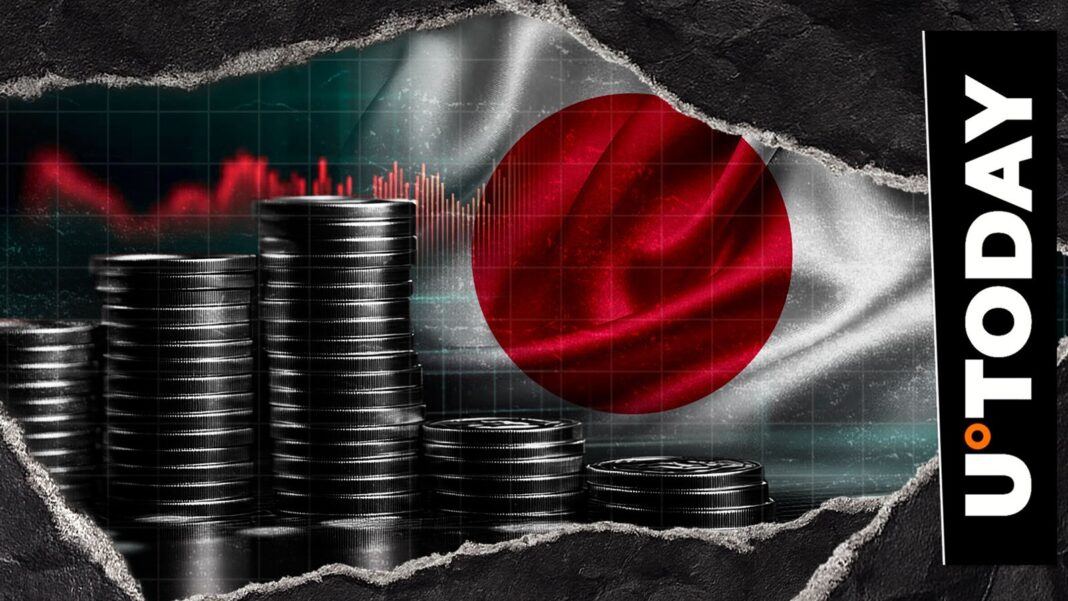Market Pulse
In a significant development signaling the deepening integration of digital assets into traditional finance, three of Japan’s most influential banking institutions – MUFG, Sumitomo Mitsui Banking Corporation (SMBC), and Mizuho Financial Group – are reportedly making assertive moves to enter the stablecoin market. This strategic pivot by financial behemoths underscores a growing global trend where established players are no longer just observing, but actively participating in the evolution of digital currencies, particularly those pegged to fiat.
Japan’s Financial Giants Embrace Digital Currency
The reported entry of these prominent Japanese banks into the stablecoin arena marks a pivotal moment for the nation’s financial landscape and the broader crypto ecosystem. These institutions, collectively managing trillions in assets, bring unparalleled credibility and infrastructure to the nascent stablecoin sector. Their involvement suggests a move towards highly regulated, yen-pegged stablecoins, potentially revolutionizing domestic and international payment systems. For years, financial institutions have eyed the potential of blockchain technology; now, with clearer regulatory frameworks in Japan, the path for direct engagement appears open.
- MUFG: Known for its technological innovation in finance, MUFG has explored various digital currency initiatives, including its own blockchain platform.
- Sumitomo Mitsui Banking Corporation (SMBC): A global leader in banking services, SMBC’s entry could significantly accelerate corporate adoption of stablecoins for treasury and cross-border operations.
- Mizuho Financial Group: With a strong retail and corporate client base, Mizuho’s participation could democratize access to digital yen, bridging the gap between traditional banking and crypto.
The Drive Behind Stablecoin Adoption
Several compelling factors are propelling these Japanese banks into the stablecoin race. Firstly, the inherent efficiency of blockchain-based transactions promises faster, cheaper, and more transparent payments, especially across borders, a significant upgrade from legacy systems. Secondly, stablecoins offer a robust digital medium for the burgeoning digital economy, facilitating micropayments and enabling new business models. Furthermore, Japan has cultivated one of the world’s most proactive regulatory environments for digital assets, providing a level of legal certainty that encourages institutional participation. This clear framework helps mitigate risks associated with digital currencies, making them more palatable for traditionally conservative financial entities.
Implications for the Global Crypto Landscape
The move by Japanese banks is not just a local phenomenon; it carries global implications. It validates stablecoins as a legitimate and essential component of the future financial infrastructure, potentially spurring other global financial institutions to follow suit. This institutional embrace could lead to increased liquidity, improved interoperability, and enhanced trust in stablecoins worldwide. Moreover, the development of major JPY-pegged stablecoins could establish the Japanese Yen as a significant player in the digital currency space, alongside USD-pegged offerings, diversifying the global stablecoin market and reducing its reliance on a single fiat currency.
- Increased Competition: Current stablecoin issuers may face robust competition from well-capitalized banks.
- Regulatory Clarity: Bank involvement often means adherence to stringent regulatory standards, potentially raising the bar for the entire stablecoin industry.
- Mainstream Integration: These initiatives can pave the way for broader public and corporate adoption, integrating digital assets into everyday financial activities.
Regulatory Context and Future Outlook
Japan has been at the forefront of crypto regulation since 2017, recognizing digital assets as legal tender. More recently, the country passed comprehensive stablecoin legislation, making it one of the first major economies to do so. This regulatory clarity mandates that stablecoins must be linked to the yen or another fiat currency, guarantee redemption at face value, and be issued by licensed banks, trust companies, or registered money transfer agents. This foresight has created a fertile ground for financial innovation, allowing institutions like MUFG, SMBC, and Mizuho to explore stablecoin issuance with a strong legal foundation. The future could see a flourishing ecosystem of highly regulated, bank-backed stablecoins, not just in Japan but as a model for other nations.
Conclusion
The reported foray of MUFG, Sumitomo Mitsui, and Mizuho into the stablecoin sector represents a watershed moment for the crypto industry and traditional finance alike. It signifies a maturation of the digital asset space, where the foundational technologies are now being leveraged by the very institutions that once viewed them with skepticism. As these financial giants roll out their digital currency offerings, the promise of a more efficient, inclusive, and interconnected global financial system powered by stablecoins moves closer to realization, setting a powerful precedent for worldwide institutional crypto adoption.
Pros (Bullish Points)
- Legitimizes stablecoins as a mainstream financial instrument.
- Could lead to highly liquid, regulated JPY-pegged stablecoins.
- Accelerates institutional adoption and cross-border payment efficiency.
Cons (Bearish Points)
- Increased competition for existing stablecoin providers.
- Potential for centralization if banks dominate the stablecoin market.
- Regulatory scrutiny might intensify for all stablecoins, not just bank-issued ones.
Frequently Asked Questions
Which Japanese banks are entering the stablecoin market?
MUFG, Sumitomo Mitsui Banking Corporation, and Mizuho Financial Group are reportedly making moves into the stablecoin sector.
Why are major banks interested in stablecoins?
Banks see stablecoins as a way to enhance payment efficiency, facilitate cross-border transactions, and participate in the evolving digital economy, often backed by a more favorable regulatory environment.
How does Japan's regulatory stance impact this development?
Japan has been proactive in regulating stablecoins, establishing clear legal frameworks that encourage participation from established financial institutions while ensuring consumer protection and financial stability.



